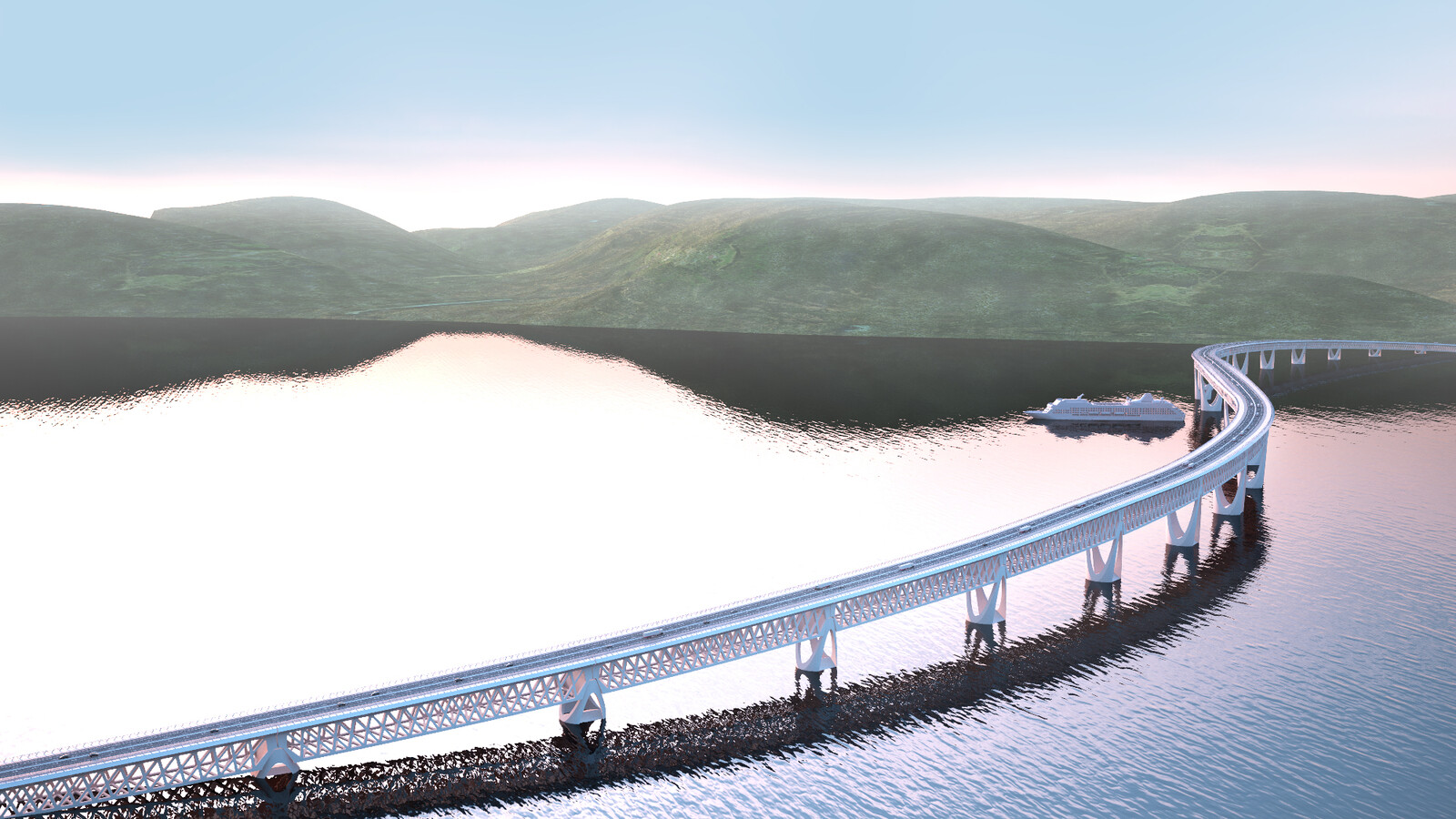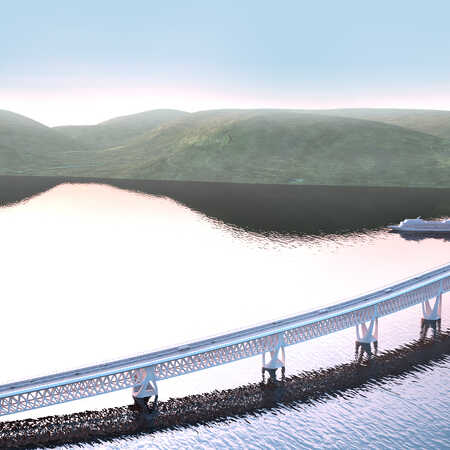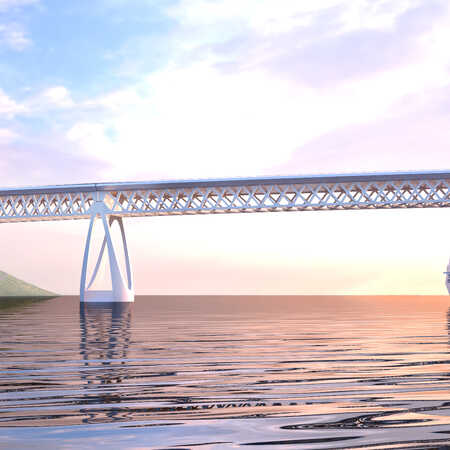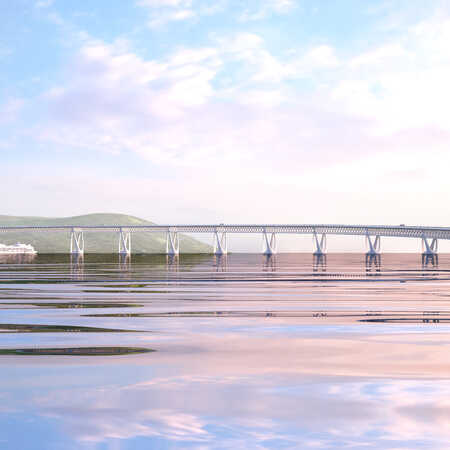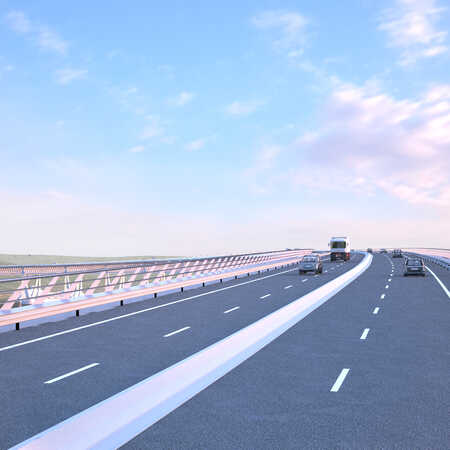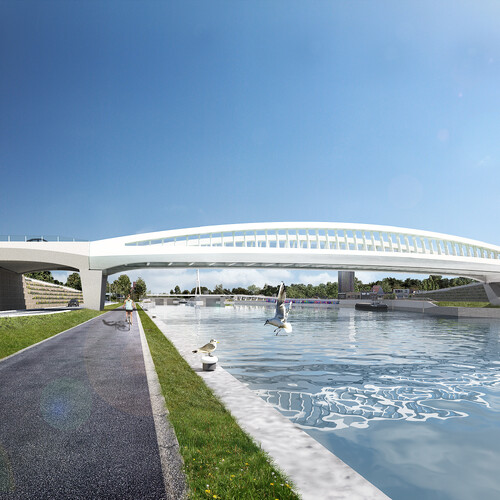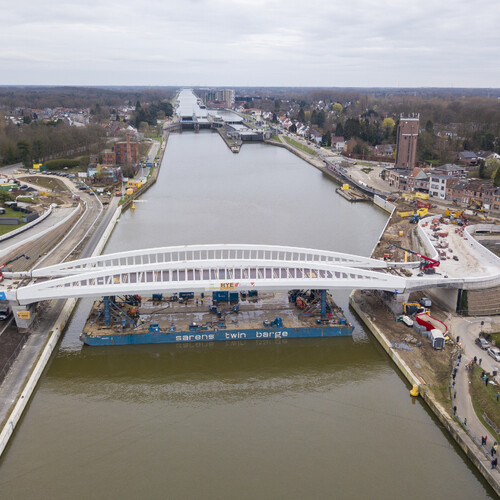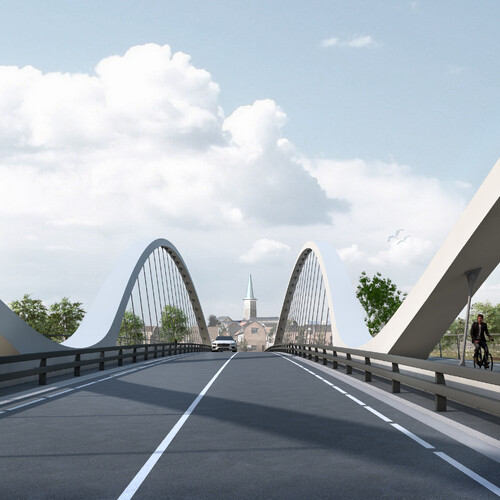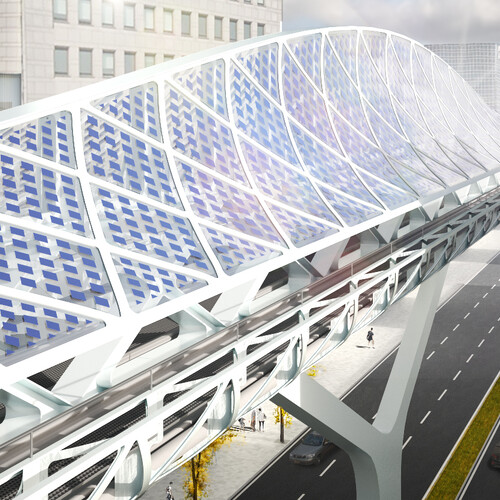A bridge in an extreme landscape
The E39 highway connects towns along the rugged Norwegian coastline. The wide and deep fjords force motorists on this 1100 kilometres long road to board a ferry eight times to get across, which makes for long travel times. One of the widest and deepest fjords is the Sognefjord, with banks four kilometres apart and a depth of a formidable 1300 meters.
Architectural studio ZJA, in collaboration with Iv-Consult and the Technical University Delft developed a design for a spectacular floating bridge, that merges with the extreme landscape and in a safe and elegant way adds an important infrastructural function.
The long and flowing lines of the mountains surrounding the fjord can be traced back in the bridge’s design, in vertical as well as in a horizontal direction. Along the four kilometres of its span the bridge reaches an elevation ranging from 20 to 80 meters above the water surface, in order to allow the largest cruise vessels to pass. There is a horizontal curvature as well, with its S-shape absorbing the forces that impact the floating bridge, much like a spine in a body does.
A unique structure
As anyone can imagine a floating bridge with spans from 200 to 465 meters is exposed to huge forces. Currents, wind, fluctuations in temperature, they all exert large forces onto the structure in various directions. The concept behind the design therefor aims for slenderness and controlled flexibility. The pontoons and columns that support the bridge’s deck are designed as an integrated system, in which all elements work together. In its look the design goes for ultimate openness and minimal use of material, to give the bridge an appearance as light as possible. In order to secure the bridge and the columns that are afloat, an underwater network of steel cables is anchored to pontoons and to the banks of the fjord. Within the margins for structural safety the bridge is able to elegantly give way to and resist the forces of water and wind. The S-shape of the deck, the placement of the pontoons and column, and the cable anchoring working together ensure an optimal distribution of all the forces. The rods in the deck are designed and placed to allow for movement. This way the immense floating bridge over the Sognefjord succeeds in presenting a flowing and clear gesture, equally astonishing as it appears logical and effortless. From afar the bridge does not stand out as a dissonant, but more like a fitting, man-made part of the impressive landscape.
The future of the concept
The basic principle of this design is the concept to not resist the large forces that are in play here, but rather to absorb the forces in doses with a structure that moves along in a controlled fashion. Not the display of robustness and power, but lightness and smart design of partly hidden interventions and additions achieve the best match between landscape and infrastructure. This method of using a floating structure, based on the interaction of landscape and structure has been developed on this scale only up until a conceptual phase. But it is a convincing and promising concept, as it also simplifies the complex construction of such enormous structures.
Paper: The Buoyancy Bridge
Architect: ZJA
In collaboration with: Iv-Consult en de TU Delft
Year concept design: 2014
Project: #781
